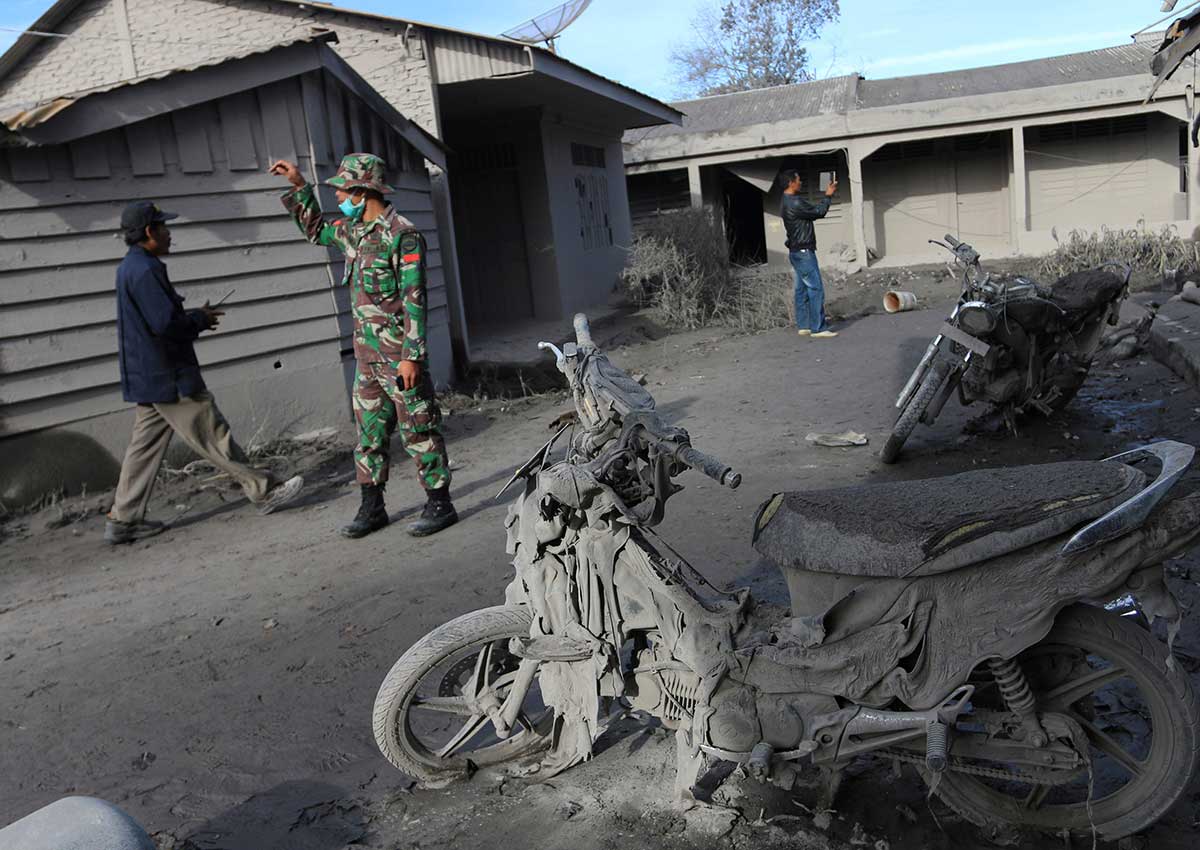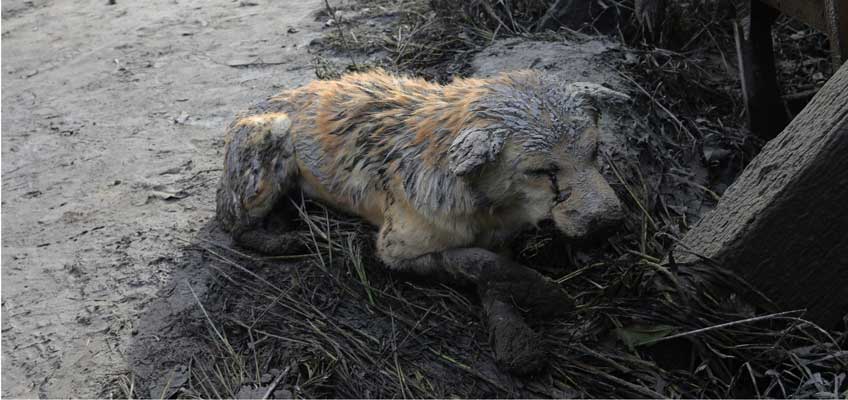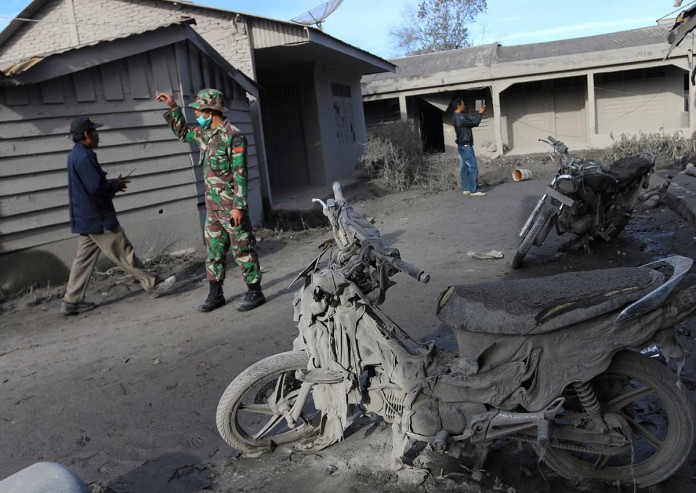Jakarta – The death toll from a volcanic eruption in western Indonesia has climbed to six, an official said Sunday (May 22), with fears more could have been trapped by the hot ash.
Three people also remain in a critical condition after Mount Sinabung, a highly-active volcano on Sumatra island, unleashed a series of fresh eruptions on Saturday afternoon, disaster agency spokesman Sutopo Purwo Nugroho said.
“Nine people were struck by the hot clouds. Six died, and three others remain critical with burns,” he said, adding the injured had been taken to hospital.
The victims were all farming within the “red zone” – an area four kilometres from Sinabung declared off limits by government authorities for safety reasons – when they were consumed by pyroclastic clouds.
These fast-moving waves of hot gas and rock can reach 700 degrees celsius as they roar down the sides of the volcano, Sutopo said.
Search and rescue teams were carefully scouring homes and farms in Gamber village, where residents were ordered to evacuate in late 2014 due to the unacceptable risk from lava flows, dense ash and falling volcanic rock.
“It is not known exactly how many people were in Gamber village when the hot clouds descended,” he said, adding emergency crews were wary of the risk of further eruptions.
“There shouldn’t have been any public activity (within the red zone).” Many living in temporary shelters had begun moving back to their farms for economic reasons, despite repeated warnings, he added.
Tens of thousands of people have been displaced since Sinabung rumbled back to life in 2013 after a period of inactivity.
It periodically erupts spectacularly, sending columns of ash several kilometres into the sky, and sometimes claims lives. Sixteen died during a particularly fierce eruption in 2014, and Sinabung remains at the highest alert level.
Sinabung is one of 129 active volcanoes in Indonesia, which sits on the Pacific Ring of Fire, a belt of seismic activity running around the basin of the Pacific Ocean.







